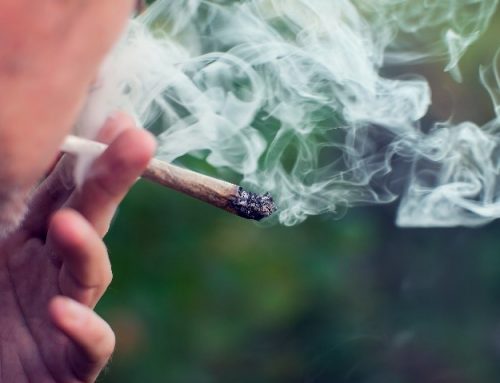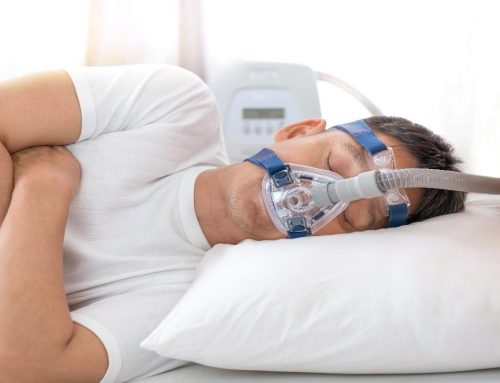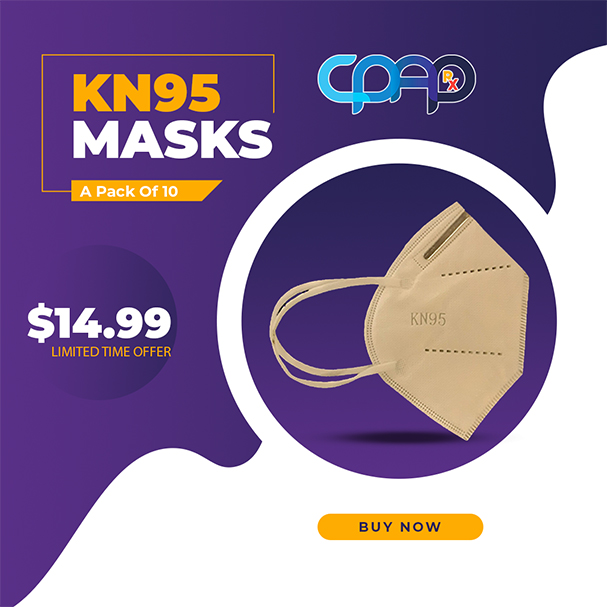Table of Contents
CPAP Mask Leak Causes, effects, and Solutions
CPAP therapy can have instant positive effects on your sleep. Though you will need a period of adjustment while you get used to the experience of the pressurized air and mask, most people notice right away that there’s a difference in their energy level after a night or two of CPAP therapy.

Inspecting a CPAP machine hose leaking air
They often wake up without the sore throats and headaches associated with sleep apnea, and their daytime sleepiness improves a little more every day as they continue therapy. In fact, one study suggests that the longer you use your CPAP machine, the more you’ll see your apnea symptoms improve.
If, however, you might notice a backslide into your old symptoms after some time— if you’re waking up extremely tired, if your throat is raw, if your head hurts, if you feel exhausted, or if your partner reports that you’re snoring again—don’t give up on your sleep apnea treatment. You haven’t built up a resistance to CPAP therapy, and Your apnea may not be getting worse. The issue could be far simpler: your apnea mask may have a leak.
Why is the CPAP machine hose leaking air?
The effectiveness of your CPAP therapy treatment depends on your CPAP mask blowing air to your airway. This air pressure has been determined during your titration study and prescribed by your sleep medicine physician. It’s precisely what you require to keep your airway from collapsing.
So is air supposed to leak from the CPAP mask? While all CPAP machines and masks are designed to have a specific acceptable level of the intentional leak, an unintentional leak from a weak seal around your nose or mouth can lower the air pressure outside the acceptable range.
With CPAP lose pressure, you may not be getting sufficient pressure. This means you could wear your CPAP mask all night but still experience a partial or full airway collapse. Your therapy is compromised.
A mask leak can be bothersome in different ways, too. Leaking air can reach your eyes and dry them out, causing severe irritation. A mask leak may also make a whistling or hissing sound that wakes you or your bed partner, contributing to fragmented sleep or insomnia.
To make sure your therapy is effective, a CPAP mask leak must be found and addressed promptly.
What Causes Apnea Mask Leaks?
A number of different factors may cause your sleep apnea mask to leak. These include:
Poor fit. If your mask is not fitting you correctly, the seal may not be tight enough, and air and pressure may escape through this broken seal.
An old mask. If you’ve been using the same mask for longer than is recommended, it will soon begin to show signs of wear and tear. The silicone may soften and become thin, which can result in cracks, tears, or holes. Or the cushioning around the mask may degrade, affecting the quality of the seal.

CPAP lose pressure if not properly cleaned
Dirt and oils are degrading the mask. It’s important to keep your sleep apnea mask clean; if you fail to clean it weekly, the dirt and oils from your body’s skin can stick to the cushioning and break the seal, particularly as air pressure from the CPAP machine increases during the night.
Sleep position. If you are a very restless or mobile sleeper who tosses and turns a lot during the night, these random changes in sleep position may lead to leaks by disrupting the placement of the mask on your face. Some people even tear their masks off in their sleep.
High air pressure. Research indicates that high CPAP pressure can raise the likelihood of experiencing unintentional leakage.
Mouth breathing. Studies show that mouth breathing when wearing a nasal mask can also lead to leakage. An oronasal mask (one that covers the nose and mouth) can help to compensate.
Deviations from the expected routine. The American Thoracic Society website shared two very interesting case studies about why patients who stick to their CPAP therapy experienced unintentional mask leaks. It turned one patient had mask leaks because she decided to wear her mask over hair curlers.
Another patient realized her cats had been chewing on her CPAP mask and tubing. When finding the cause of your apnea mask leaks, sometimes you may need to put on your detective cap and do some sleuthing to eliminate variables. The more information you can gather about your equipment, your habits, and your sleep hygiene, the more likely you are to solve the mystery of why your mask is leaking.
Tips adjusting CPAP mask leaks
Check your fit and seal. Sometimes a poor seal happens because people put on their CPAP masks incorrectly. The proper way to put on the mask, according to the American Sleep Apnea Association, is to secure it loosely to your face while sitting in bed. Next, turn your CPAP machine on.
After lying down in your normal sleep position, tighten your straps until you get a good seal, but don’t overtighten. Lastly, seat your mask by pulling it an inch or two off your face until the outer layer inflates. Then lower it. The dual layers of cushioning ensure a more secure seal.
Try a new style of mask. A full-face mask that goes over the mouth or nose may be more effective if you breathe through your mouth. If you already use a full face mask and still have leaks, a nasal-only mask with a chin strap may be accommodating. A different style of the machine may also help.
Replace your worn mask. An old mask will need to be replaced as the silicon and cushioning wear out.
Ramp up your pressure. Using the ramp function on your CPAP machine will gradually raise your pressure, minimizing the likelihood of breaking your seal or causing discomfort that makes you remove your mask.
Get mask accessories to help. Talk to your CPAP supplier if you have problems with mask leaks. CPAP mask accessories like a full face liners, mask sealer, nasal mask or nasal pillow liners, CPAP cushions, nasal gel pads, and eye shields can help to stop or minimize leaks and the annoyances associated with them.
A leaking CPAP mask is not a disaster—it’s typically a sign of either an improper fit or a need for replacement parts or accessories. Keep trying until you find the root of the problem, and stay in touch with your physician and your supplier.








 Shop
Shop



